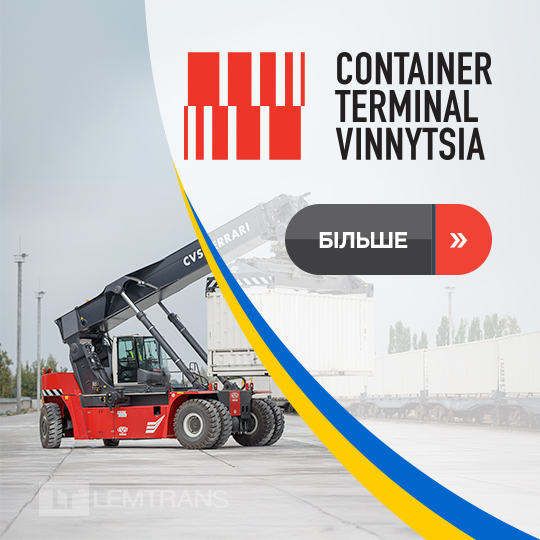Of course, the logistics industry has also undergone significant changes. But it has proven to be a vital sector for solving humanity's problems. Moreover, the concept of "Turmoilogistics" should be seen as proof of how successfully and efficiently logisticians have applied the lessons of past experience to their operational processes. This era was filled with lessons and insights.
In the aftermath of COVID-19, the sudden decline in demand caught the entire sector off guard. The initial response of the global transportation industry was to reduce freight rates due to declining demand; however, it soon became evident that this decision was unsustainable. Market realities taught everyone a serious lesson: no matter how much freight rates were lowered, transportation volumes would not return to previous levels due to near-total demand evaporation.
The battle against price chaos has become a permanent challenge. Today, if we can speak of an international logistics market, it is because we have established an organic pricing mechanism capable of responding to almost all parameters in real time. Pricing strategies are now managed using complex numerical and algorithmic models. A significant portion of the work has been delegated to artificial intelligence mechanisms through predictive analysis methods. However, it is essential to acknowledge that not all of our problems can be solved through software coding alone.
Container trade from the Far East to the West contracted rapidly after COVID-19. Initially, containers were withdrawn from service, followed by vessels. This abrupt transformation directly impacted port workers, truck drivers, crane operators, and even white-collar office employees. Large numbers of people lost their jobs on a massive scale. During this period, we witnessed strikes among dockworkers, especially in the United States and European ports.
Due to low wages, deteriorating working conditions, declining productivity, and the sudden increase in freight rates, the unloading of large container ships slowed down to historically unprecedented levels. Yes, freight rates initially dropped, but due to the decreasing number of available equipment and vessels, they later surged to four times their previous levels. The reason a 40-foot container was transported from Shanghai Port to Savannah for $20,000 or more was not increased trade but rather the near collapse of global commerce. When port worker strikes and slowdowns were added to this constraint, the demurrage costs for ships—some exceeding half a million dollars per day—caused freight rates to skyrocket.
Add to that the factor of wars, which also affected logistics. Organizing a picnic for ten people can be challenging; imagine planning for a large number of troops. It is evident that an army that plans its logistics resources better than its adversary will manage the process with minimal losses and maximum gains.
The history of warfare has dedicated entire academic fields to the logistics strategies of empires such as Rome, the Ottoman Empire, and the British Empire. For example, when examining Ottoman archival records, it is clear that years before a military campaign, food depots were established along strategic routes. These depots stockpiled supplies in advance. As the army set out, logistical teams preceded them, setting up field kitchens and preparing accommodations, meals, sanitation, and water supplies for thousands or even tens of thousands of troops. Ammunition flow to the front lines was strategically planned, utilizing concealed supply routes. Route planning took into account factors such as seasonal conditions and religious holidays to minimize disruption to civilian life in the cities the army passed through. Transportation was a crucial component, with maritime logistics maximized due to the high costs and inefficiencies of overland transport.
There are many examples of armies losing battles and even wars because of unaccounted-for logistical issues. For example, the failure of Napoleon's Russian campaign due to the lack of food and warm winter clothing in Moscow, which was burned when the French entered the city. Or the impact of the Allied bombing of the Romanian oil fields in Ploesti on the course of World War II as a whole. Germany relied heavily on these oil fields, and in 1944-45, its military was paralyzed by a lack of fuel. The Ottoman army almost captured Austria during the Second Siege of Vienna, but the prolonged siege led to a shortage of food and ammunition.
In the modern era, wars serve as a stark reminder of how supply chain processes must be established, maintained, and made sustainable under constrained conditions. The Ukraine-Russia war is not merely a struggle for military power but also a battle of supply chain management. Considering that Ukraine is on the defensive, constantly under attack, and facing attempts to cripple its infrastructure, the country has managed this process exceptionally well, effectively writing a new chapter in "Turmoilogistics". There is little doubt that Ukraine's innovative, efficient, and adaptive wartime supply chain management solutions will soon be recognized in the academic literature under the title "Ukrainian-Style War Logistics".
However, "Turmoilogistics" covers not only war and pandemic scenarios but all potential disasters that humanity may face. For example, Ill-advised political decisions disrupt international trade, preventing millions of people from accessing essential goods.
For example, Turkey's misguided trade policies have led to severe allegations of corruption and economic instability. In a desperate move to appease supporters, Erdogan paralyzed Turkey’s longstanding trade ties with Israel overnight through a single decree. The immediate loss amounted to billions of dollars. In retaliation, Israel imposed a 100% tariff on all Turkish goods. Strikingly, this rash and premature decision was made without consulting the logistics industry or the heavy industrial sector.
Nevertheless, the logistics industry, demonstrating its expected agility, devised multiple solutions. Today, goods transported between Turkey and Israel are documented as being "exported to Palestine." Though Gaza has been largely destroyed, official export figures for the West Bank have surged to several billion dollars. Given that only three million people reside in the West Bank, this is an astonishing figure. Meanwhile, despite frequent aerial skirmishes over the Aegean, Turkey and Greece appear to be working together to circumvent Erdogan’s embargo. Turkish exports are shipped to Greece, where minor documentation changes allow them to be rerouted to Israel.
Our understanding of logistics must now encompass sudden political decisions, unforeseen wars, global pandemics, and the erratic behaviour of leaders like Trump, Putin, Erdogan, Netanyahu, Orbán, or Maduro. Global logistics "chefs" once considered fifty parameters when preparing their "soup"; today, they must incorporate over a hundred variables while ensuring the taste remains intact. The era of "Turmoilogistics" is here. Be prepared.
Dr. Kerem Şahinboy
academician in International trade & logistics majors, the founder of Asgard Transport & Logistics in Turkey


